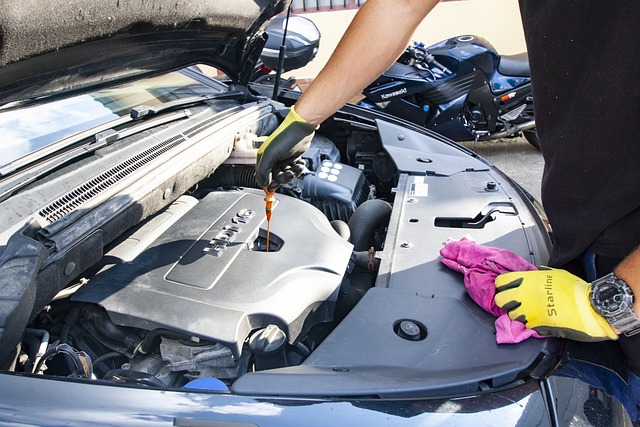Skipping oil changes does real damage to your engine as well. Old or filthy oil can’t hold back the power to keep parts slick and cool, so metal grinds on metal and heat accumulates. For high-mileage cars and fresh motors alike, skipped oil changes equate to increased wear, valves that stick and even catastrophic engine failure. Oil keeps grit and sludge out of moving parts, so allowing oil to break down introduces hazards like clogged filters and degraded seals. Even minor skips can cause repairs to cost more and reduce your vehicle’s lifespan. To find out how every skipped oil change adds up damage, and what you can do to repair it, the following sections deconstruct the process step-by-step.
Key Takeaways
- Skipping oil changes causes sludge, friction and overheating that speed wear and even risk severe engine damage.
- Regular oil changes with quality oils can help keep your engine properly lubricated, prevent corrosion, and optimize its performance.
- This is especially true for modern engines, such as turbos and direct injection, which have tighter tolerances and can be more sensitive to oil quality.
- Skipping oil changes only leads to expensive repairs, crushed warranties and diminished resale value, so it’s just plain smart to stay on top of preventive maintenance.
- Paying attention to dashboard warning lights, abnormal engine sounds, and the oil itself will alert you to problems early and avoid expensive breakdowns.
- This proactive oil management — selecting the right oil, driving habits, and maintenance schedule — not only prolongs your engine’s life, but it helps keep your car running efficiently.
The Anatomy of Engine Damage
Skipping oil changes isn’t just a maintenance no-no, it can do actual damage to your engine. Oil is more than lube. It prevents metal components from friction, extracts heat from engine hot zones, and inhibits sludge or rust buildup. When oil is old or dirty, it ceases to perform these tasks effectively. This chapter dissects what happens inside your engine when oil changes go ignored.
Sludge Formation
Sludge is dirty oil, gunked together with dust, metal shavings and combustion byproducts. As sludge consumes, it obstructs oil passages and fouls essential components such as the oil pump, camshaft, and lifters.
If oil thickens too much it can’t flow well, starving engine parts of lubrication. Frequent oil changes, particularly synthetic every 5,000 to 7,500 km or mineral every 3,000 to 5,000 km, wash away these culprits. High-quality oils and regular maintenance prevent sludge from damaging the engine by ensuring consistent oil flow and cleanliness of parts.
Increased Friction
Old oil loses its slickness. When that happens, metal parts begin grinding directly against one another, accelerating wear on piston rings, bearings, and cam lobes.
This additional friction generates heat and slowly erodes surfaces, causing increased repair expenses and reduced engine longevity. On-time oil changes keep the engine shielded and purring. Selecting the proper oil viscosity for your engine and climate – particularly when you do a lot of driving in hot or harsh conditions – helps keep friction at a minimum, too.
Cutting oil changes implies each ride contributes to internal friction, stressing components to the breaking point earlier.
Component Wear
Engine components are under continual stress. Without clean oil, they degrade much more quickly. Surface scoring, pitting and metal fatigue can soon establish itself particularly around the crank or timing chain.
Synthetic oils generally shield more and endure more, quite a viable option for the once in a while serviceman. By replacing wear parts early and adhering to regular oil intervals, engines will run well for years.
Overheating Risk
Old oil ceases to remove heat from engine components. That puts the engine in danger of overheating, particularly in hot weather or on extended drives.
Monitor oil levels and quality frequently. Regular oil changes keep engine temperatures under control.
A hot engine can break down fast.
Corrosion Damage
Old oil won’t prevent rust or corrosion. When oil additives degrade, moisture and acids begin corroding important engine surfaces.
Frequent oil changes inhibit rust and preserve engine health.
Check for rust if oil changes have been skipped.
Use oils built for high protection.
Your Car’s Slow Decline
Oil change neglect doesn’t obliterate your engine overnight. The decline is slow, manifesting itself initially as minor changes in the way your car feels and drives. With use, engine components undergo increased wear, friction increases, and heat dissipates, causing your car to slowly decline. Oil changes, for example, are crucial not only because it’s a good habit, because it’s an important maintenance step to keep engine parts clean, cool and moving smoothly.
Performance Loss
Slow acceleration and loss of power are usually the initial indicators. If your gas pedal feels sluggish or your car struggles up hills, aged oil may be to blame. Filthy oil can’t lubricate moving parts effectively, so friction increases and performance degrades. This may result in strange noises, rough idling or, in some cases, warning lights on the dash.
Sticking to a regular oil change schedule keeps these symptoms at bay. Following the manufacturer’s recommended interval—typically 8,000 to 12,000 kilometres with synthetic oil for newer vehicles—keeps your motor humming. The correct oil, too. With the right viscosity and grade, as specified in your owner’s manual, it will help your car reach peak performance while keeping components clean.
Monitoring your car’s vitals, such as engine temperature and throttle response, can assist in detecting problems before they get worse. If you feel it moving, it’s time for an oil check.
Fuel Economy
Old oil creates more drag inside your engine. This additional friction makes the engine burn more fuel, so you find yourself at the pump more frequently. Even a slight depreciation of oil quality causes more costly gas expenses in the long run.
Regular oil changes are money savers too, particularly for those who take the long or daily commute. Track your MPG following every oil change and watch for a decline—this is a good indicator that your engine requires a check-up.
Couple routine oil changes with conscientious driving—steady speed, light acceleration—and you can squeeze the pumice out of every liter of fuel.
Emissions Impact
Filthy oil makes engines burn fuel dirtier, increasing emissions. Higher emissions makes it more difficult to pass tests in a lot of areas. Skipping oil changes means more pollution, polluting the environment.
Below is a table showing how oil quality and maintenance affect emissions:
|
Oil Quality |
Maintenance Frequency |
Emissions Level |
|
Clean |
Regular |
Low |
|
Slightly Used |
Occasional |
Moderate |
|
Dirty |
Rare or Skipped |
High |
Keeping pace with local emissions rules entails checking oil frequently and changing it as necessary.
Modern Engine Sensitivities
Due to the advanced technology and tighter engineering tolerances in modern engines, they are more sensitive to oil than older models. They usually require more frequent oil changes, particularly if driven in extreme or brutal conditions such as heavy city traffic or towing a load. Overdue oil changes in these engines can make dirty oil lose its lubricating qualities, sludge and generate extra noise or even long-term wear. A number of new engines demand synthetic oils, as these provide superior performance in both hot and cold weather environments.
Turbochargers
Clean oil is the lifeblood of turbocharged engines, helping them to run smoothly and prevent a breakdown. Bad oil changes can kill turbos fast since they spin at such high speeds and temperatures that they require consistent, premium lubrication.
Synthetic oil is a must for turbo engines. It resists breakdown better, shields turbo parts from wear and preserves performance longer. Than normal engines, turbos almost always require more frequent oil changes and higher grade oils.
|
Aspect |
Turbocharged Engines |
Regular Engines |
|
Oil Change Frequency |
More frequent |
Standard intervals |
|
Oil Type |
Synthetic preferred |
Conventional or blend |
|
Sensitivity to Oil Quality |
Very high |
Moderate |
|
Failure Risk When Neglected |
Turbo failure, high costs |
Gradual wear |
Direct Injection
Direct injected engines are at risk of carbon buildup if your oil isn’t changed promptly. This buildup can reduce efficiency and harm components.
Regular oil changes keep these deposits at bay, defending engine responsiveness. Direct injection engines typically require particular oil formulations that minimize deposits and support efficient performance.
Keep an eye out for symptoms such as rough idling, decreased fuel efficiency, or increased exhaust smoke as these could indicate oil problems.
Tighter Tolerances
Modern engines have much tighter tolerances than older models, so they’ve got less margin for error if oil gets dirty or breaks down.
Standard oil changes are key to lubricating everything and keeping it running well. Never use a viscosity and type other than what is recommended for your engine. This is particularly critical during cold winters, where thick oil fights to pump through tight channels.
Remaining vigilant for burning smells or strange engine noises can assist you in catching oil issues early.
The Financial Aftermath
Skipping oil changes is not merely a technical matter — it’s a choice with significant financial implications. The expenses extend well past the service bay. Frequent oil changes are the ward against expensive repairs, keeping warranties intact and resale value alive.
Repair Costs
Skipping oil changes can result in hundred or thousand dollar repair bills. Engine components such as pistons and bearings rely on fresh oil to function as engineered. As once old oil breaks down, these parts wear out quicker. Fixing engine damage caused by bad oil changes could set you back $3,000 to $10,000. The worst possible result — an engine replacement — frequently tops $10,000. For comparison, a regular oil change with a filter typically runs you just $50 to $100.
Preventive maintenance is always cheaper than big time fixes. By budgeting for oil changes, owners don’t suddenly get surprise bills that wreck their personal finances. Frequent oil changes keep engines humming, too, conserving as much as 12% on fuel consumption. That translates to less cash out of pocket at the gas station.
A visit to a trusted mechanic can shed light on that potential risk and cost. A professional can educate you on how missed upkeep results in larger bills later and help you develop a reasonable maintenance schedule.
Warranty Issues
Car warranties typically want to see proof of regular oil changes. Missing this step can void your warranty, making you on the hook for all repair costs. Without coverage, something small can turn into an expensive problem.
Maintain comprehensive records of each oil change, to save your warranty. This record can be invaluable if you ever have to make a claim. Oil change intervals are specified by many manufacturers in the warranty. Adhere to these carefully to remain qualified.
Keeping up with oil changes is just one way to keep you out of warranty provider’s crosshairs. A regular calendar warning or reminder can go a long way in keeping maintenance on track.
Resale Value
A car with a good maintenance history sits at the top of the resale heap. Buyers want those cars with routine oil changes and service records. Skipping oil changes can diminish your car’s desirability and reduce its value considerably.
Routine maintenance ensures engine health, a major selling point. Putting money into oil changes safeguards your investment and keeps your car beautiful to the market.

Recognizing The Warning Signs
Knowing when your engine could use fresh oil is key to avoiding long-term damage and expensive repair bills. Missing regular oil changes causes more friction inside the engine, makes it prone to overheating, and can cause premature engine failure. The price for overlooking these warnings can be steep, necessitating repairs that clock in well above $10,000, or landing you with a failed inspection and an undrivable vehicle.
Dashboard Lights
Look for dashboard lights about oil pressure or oil life. That little oil can or a ‘check engine’ light is not a recommendation. It means the oil is low or bad, and the engine is not being lubricated as planned. If the oil light illuminates, get an oil change immediately. Even other warnings, such as a service light, can suggest potential oil problems. Overlooking these can result in expensive repairs, blown inspections or outright failure — way more than the typical $50 to $100 it costs to change oil and filter.
Engine Noises
Engines use oil to lubricate the moving parts. When oil deteriorates, you can begin to hear ticking, knocking or grinding from the engine. These sounds signify the engine isn’t receiving the lubrication it requires, and metal components could be grinding against each other. If you hear these sounds, schedule an oil change immediately. More noise typically indicates that friction and heat are accumulating, which can additionally harm internal components and reduce gas mileage up to 12 percent.
Oil Condition
Pull out the dipstick every now and then to really check the oil. Search for oil that’s transparent and silky. If the oil appears dark or gets gritty between your fingers, it’s polluted and inefficient. Low or thick dirty oil can cause the engine to run hotter and risk severe overheating. Your average engine runs between 195°F and 220°F, but higher temps can spell danger. Don’t wait for the miles, base your oil changes on the condition of the oil.
Proactive Oil Management
Proactive oil management is crucial for anyone looking to keep their engine running strong, smooth, and efficient. It’s a mistake to skip oil changes because it leads to more wear, reduced fuel efficiency and potentially even engine breakdown. From establishing a disciplined oil change routine to selecting the right oil to evaluating how your driving habits impact oil life, you can prevent expensive repairs and maximize your engine’s longevity.
Oil Selection
Choosing the optimal oil for your car starts with understanding your engine’s requirements and the environment you drive in. A lot of newer engines actually perform better on synthetic oils, which resist heat, wear and breakdown far longer than conventional oils. For example, synthetics blends can maintain their protection in both temperature extremes, making them a reliable choice for motorists in regions with temperature swings.
That said, don’t just blindly grab any oil off the shelf — always check your owner’s manual for oil specifications — viscosity (5W-30, 0W-20, etc.) matters, as do oil certification marks. Newer oil tech, like low-friction additives, can help fuel economy by reducing drag inside the engine. Keeping up with the times keeps drivers getting the most from every oil change.
Driving Habits
Good driving habits make your oil last and keep your engine fresh. Regular short drives prevent oil from heating up and circulating properly, which accelerates wear. Attempt to consolidate errands, or drive farther, when possible.
If you lug heavy loads or commute in stop-and-go traffic a lot, your oil could degrade more quickly. These driving conditions are hard on your engine and oil, so it’s wise to check oil more frequently or reduce your change intervals when necessary. Aggressive driving—hard starts and stops—heats oil faster, frying it prematurely.
Interval Checks
Flagging routine oil change milestones, such as every 8,000-12,000 KM, keeps your vehicle in optimal condition. Establish digital calendar alerts or utilize a vehicle maintenance app to monitor these benchmarks.
- Note the last oil change date and distance.
- Record oil brand/type used.
- Inventory recent driving conditions (short trips, heavy loads, harsh weather).
- Monitor fuel economy variations as an indicator of oil condition.
Modify the interval to fit your driving habits. Frequent oil-level and color monitoring can detect problems early, preventing problems before they begin.
Commitment to Routine
Building habits around servicing your oil is a minor, low-cost investment—generally $50 to $100 per service—that prevents major expenses, such as $3,000 to $10,000 for engine repair. Staying consistent increases your car’s resale value and keeps your ride zipping for years.
Conclusion
Old oil thickens, collects grit and ceases to perform the job. Metal parts grind, heat builds and small issues get big-quick. Newer cars — with their tight parts and smart tech — feel the hit even more. Easy oil swaps are cheaper than major repairs or a brand new engine. Notice strange engine noises or warning lights? Hop to it and save money later! Nobody likes to pay for a repair that solid maintenance prevents. Keep your car running smooth—remember to mark your calendar for that next oil change. Need more tips or have a story to share? Leave a comment or visit the blog for new posts.
Frequently Asked Questions
1. How does skipping oil changes damage an engine?
Skipping oil changes allows dirt and debris to accumulate. This results in excess friction and heat, which wears out engine components with increased speed. Over time it can cause serious engine damage.
2. What are the first signs of engine trouble from missed oil changes?
Some early symptoms are louder engine sounds, loss of power, and warning lights on your dash. If you observe these, change your oil immediately.
3. Can modern engines handle missing oil changes?
Today’s engines are more precise and sensitive. They depend on clean oil. Skipping changes can lead to premature engine wear and may even void your warranty.
4. How often should I change my engine oil?
Most manufacturers suggest doing an oil change every 8,000 to 12,000 km. Consult your owner’s manual for your car’s requirements.
5. What are the financial risks of skipping oil changes?
Putting off oil changes can result in costly repairs or even complete engine failure. Oil changes cost a lot less than engine replacements.
6. Is synthetic oil better for preventing engine damage?
Synthetic oils protect more and last longer. They do a good job of minimizing engine wear, so they’re a great option for most cars.
7. Can I tell if my oil is too old just by looking at it?
Old oil can appear dark and grimy, but looks are not enough. Go by your maintenance schedule, not the oil’s appearance.
Time for an Oil Change? Let’s Make It Count.
Don’t let something as simple as old oil turn into a big repair bill. At autoTECH Blackhawk, we don’t just do oil changes — we protect your engine, extend the life of your vehicle, and treat you like family every mile of the way.
Whether your dashboard reminder is flashing or you’re just not sure when your last oil change was, we’ve got you. Our expert techs use only manufacturer-recommended oil and filters, and every service is backed by our industry-leading 3-year/36,000-mile warranty.
Need conventional or synthetic? We’ll help you choose what’s best for your car — and your driving style.
Fast. Friendly. Reliable.
Schedule your contactless oil change today and see why drivers across the Bay Area trust autoTECH Blackhawk to keep their engines running strong.
Book now at AutoTECH Blackhawk or give us a call — let’s keep you moving, worry-free.


